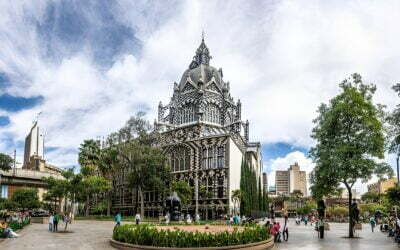Delhi is officially known as the National Capital Territory (NCT) of Delhi. Although a city, it is also an Indian Union territory consisting of New Delhi, India’s capital, and Old Delhi. It lies west of River Yamuna and borders two other states, Uttar Pradesh on the east and Haryana on the north and south.
Table of Contents
- 1 Historical Background
- 2 Visa Application
- 3 What makes Delhi a popular tourist attraction?
- 4 Cost of living and cost of living arbitrage
- 5 Best Coworking spaces
- 6 Blockchain and cryptocurrencies
- 7 Expat Community
- 8 Popular recreational activities and fun Spots
- 9 Transportation
- 10 Safety
- 11 Cultural and social norms
- 12 Political and economic stability
- 13 Language and Language Barriers
- 14 Healthcare in Delhi
- 15 Electronic standards
- 16 Payment service infrastructure
- 17 Climate, and Seasons
- 18 Popular Cuisines
- 19 Common concerns
Delhi covers an area of 1483 sq km and is home to 15,217,000 people, according to the 2011 census.

For digital nomads, Delhi is a great choice, and it’s visitor friendly. Its vibrant lifestyle, natural biodiversity, and cultural diversity make it a destination for digital nomads to consider.
Historical Background
Delhi has a long history of being the capital of different empires. Delhi’s earliest meaningful historical register was in the 8th Century during the Tomar’s Kingdom. Since then, Delhi has been destroyed and rebuilt numerous times due to invasion by outsiders.
From 736 to 1193, the Tomara dynasty and Chauhan ruled over Delhi. After this period, the Delhi Sultanate, a group of 5 successive dynasties, ruled over Delhi until 1526. After this period, Delhi experienced several wars until 1803, when the British company took over the territory. However, after a rebellion in 1857, the British ended their rule in the region. As a result, India became an empire under Emperor Bahadur Shah II.
Unfortunately, this rebellion was short-lived, as the British recaptured Delhi and other territories. In 1997, the British changed their Indian capital to New Delhi from Calcutta. Later, New Delhi remained the capital of India after independence in 1947.
Visa Application
India is an exotic destination for travelers. It has diverse, unique cultures and features that add to your fascinating memories. Thanks to this cultural diversity, it attracts different people from all corners of the world.
In fact, according to tourism.gov.in, India ranks in the sixth position for countries attracting many visitors in the Asia and Pacific region. Also, based on ceicdata.com, India received 966,270 visitors in Dec 2022, a 20.4% increase compared to the previous month.
The government of India makes it easy and hassle-free to apply for a Visa into the country. For example, applying for an e-Visa online is now possible instead of visiting an Indian Embassy.
India has several types of visas depending on the reason for travel. Below is a summary of these types of visas.
| No. | Visa type | Relevance | Maximum Duration |
| 1 | Business visa | Travelling to India for Business | 5 years (Extendable) |
| 2 | Employment visa | Individuals seeking employment in India | 5 years (Extendable) |
| 3 | Project visa | Execution of projects | 1 year or per the contract duration |
| 4 | Medical visa | Medical treatment purposes in India medical facilities | 1 year |
| 5 | Tourist visa | Visiting to enjoy tourism | 30 days (Not extendable) |
| 6 | Transit visa | Travelling through India | 15 days (Not extendable) |
| 7 | Research visa | Research purposes in any field | 5 years (Extendable) |
| 8 | Conference visa | Attending seminars | Per duration of the event |
| 9 | Entry visa | Uniting family of foreigners | 5 years (Extendable) |
Visa available for digital nomads
The government of India is yet to introduce a visa specifically designed for digital nomads. Alternatively, you can apply for a long-term tourist visa to work and live in India for five years(or more if extended).
Unfortunately, you must leave and re-enter the country after 90 days, regardless of your visa duration. Luckily, visitors from Japan, the USA, and Canada can leave and re-enter India after 180 days.
Additionally, for certain countries, the Indian authorities will individually determine their duration of stay. These countries are as follows.
- Syria
- Sudan
- Belarus
- Uzbekistan
- Kazakhstan
- Ethiopia
- Nigeria
- South Sudan
- Sri Lanka
- Kuwait
- Tunisia
- Algeria
- Yemen
- Congo
- Uganda
- Qatar
- Libya
- Kyrgyzstan
- Turkey
- Egypt
- Iran
- Turkmenistan
- Afghanistan
- Lebanon
- Iraq
- Bahrain
- Somalia
- Morocco
- Saudi Arabia
Process of applying for an Indian visa
To apply for a visa online, here is the step-by-step process you need to follow.
- Finish the visa application process: Complete the online application form. While applying, you must provide your details, details on past criminal activities, and passport details.
- Make payment: Through PayPal, credit or debit card, make payment to the specified account.
- Upload passport and other relevant documents. After payment, you’ll need to provide additional information on the reason for the visit and the type of visa you need. After payment, you will receive a secure link in your email where you can upload these documents.
- Wait for visa approval. The visa approval process usually takes 1-3 days. If accepted, you will receive your visa in your email in PDF format. Now you can download the pdf format and print a copy for easy airport processing.
Requirements to qualify for an Indian visa
While applying for your visa, here is a list of documents you must have.
- A copy of a standard passport valid for at least six months. The passport should have two blank pages.
- A copy of your passport photo. The photo must meet the specified requirements.
- Proof of enough savings, at least USD 1000, to spend during your stay.
- Have a valid email address.
The cost of applying for a visa
Due to the different types of Indian visas, the application cost varies. For instance, a 30-day visa will cost around 28 USD, while a one-year visa will cost around 43 USD. A 5-year visa, however, will cost roughly 84 USD.
Difficulty in visa application
Applying for an Indian visa is quite simple. The government provides an electronic visa application system that’s very user-friendly. With all your documents ready, you can complete your application in just a few minutes.
Also, the approval process is fast. It takes 1-3 days to get an approval notice sent to your email address.
Although visa rejections are rare, some reasons that might cause this are past criminal records and providing inaccurate information.
What makes Delhi a popular tourist attraction?

The Lotus Temple.
Delhi is an architectural splendor. It’s home to some of the greatest monuments in the world, Humayun’s Tomb, Red Fort, the Indian entrance gate, and Qutub Minar. These monuments have survived hundreds of years. Many were set up in the times of the ancient emperors. Among these monuments are uniquely designed temples. These temples include, Lotus, Sri Jagannath Temple, Hanuman Mandir, and Akshardham.
On top of that, Delhi is a popular cultural center attracting people from all corners of India and the World. It hosts a range of cultural activities, from the flying kite festival to Lohri to Diwali to Dussera.
Another reason why Delhi attracts millions of tourists annually is its cuisine. The cuisine here ranges from Biryani to Samosa to Curry to Masala. Usually, these dishes aren’t complete with different tastes of spices. The city also provides very diverse cuisine for vegetarians.
Delhi also provides dozens of coworking spaces for digital nomads to work in. These spaces provide a great environment for nomads to work, interact and thrive.
Cost of living and cost of living arbitrage
India is one of the least expensive countries in the world. However, this cost of living varies from one city to another. According to data from Nomadlist.com, the average living cost for a digital nomad in Delhi is 1,427 USD per month. In contrast, Mumbai costs about 2,337 USD per month.
Meanwhile, a family needs an average of 2,866 USD monthly (inclusive of rent) to live in Delhi city.
Accommodation
There is a range of accommodation options to choose from in Delhi. These accommodation options include hotels, Airbnb, studio apartments, and co-living spaces.
Based on data at Nomadlist.com, a hotel will cost you an average of 609 USD monthly. Meanwhile, an Airbnb will cost you more, about 1,548 USD monthly. A one-bedroom studio apartment, however, will cost 801 USD per month. So, a studio apartment is the best option for an extended stay in Delhi.
Another popular accommodation option in Delhi is co-living spaces. These spaces provide essential facilities to ensure your stay is highly productive. Some common facilities in these spaces are:
- Private bedroom
- Shared bathroom
- Desks
- Ergonomic chairs
- Canteen
- Entertainment area

Some good examples of co-living spaces in Delhi city are:
- LivspaceMulive Co-living
- Covie Co-living spaces
- Workcoh Lakes contact; +91 9810005315
- iLive Co-living PG Gurgaon
- The urban Storey
On average, these co-living spaces will cost around 245 USD per month.
Best neighborhoods to live in Delhi
Some of the best neighborhoods around Delhi to live in are:
1. Hauz Khas
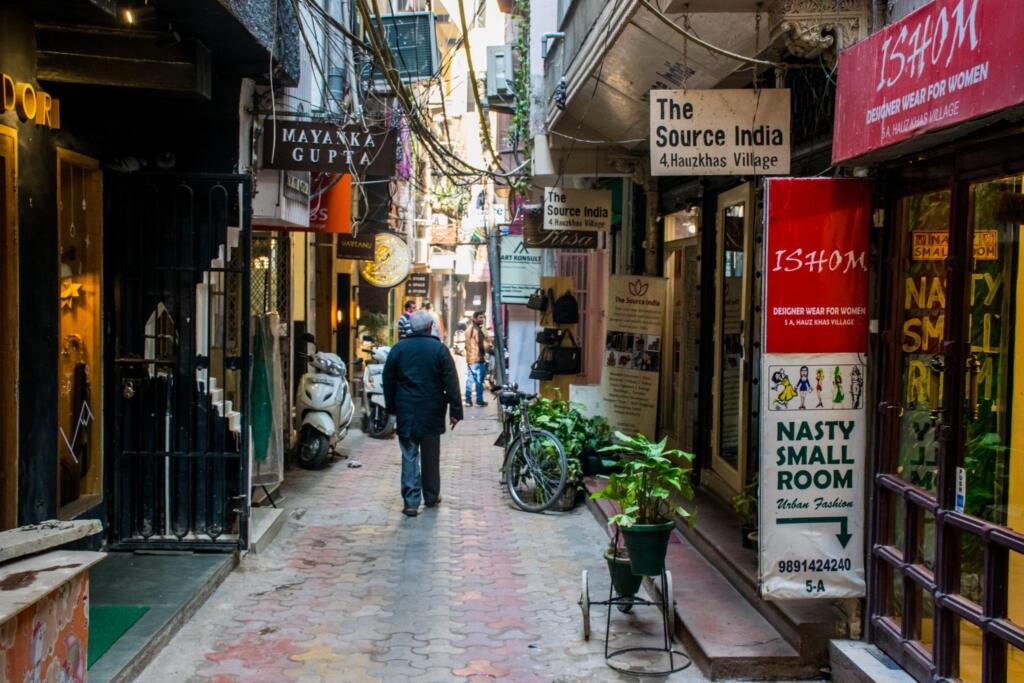
Hauz Khas means “the royal tank” in Urdu. Located in South Delhi, it is home to prominent institutions like IIT Delhi and NIFT Delhi. Also, it is a posh neighborhood with famous boutiques, clubs, art galleries, and restaurants. Additionally, Hauz Khas is home to several forts that showcase the area’s long history.
Accommodation options at Hauz Khas include hotels and studio apartments. Some of these accommodation options are;
2. Rajouri Garden
Rajouri Garden, located in the western part of Delhi, is another best neighborhood to live in when in Delhi. Here you can enjoy eating tasty meals, shopping at the street stores, and walking in public spaces.
Rajouri Garden is known for its paramount connectivity and its top-end colleges. This makes it the perfect place for students, digital nomads, and other working professionals.
Looking for accommodation in this part of the city? Here are some options you can choose from;
3. Lajpat Nagar
Lajpat Nagar, located in the south of Delhi, is a commercial and residential hub. While navigating this neighborhood, you will likely stumble across the renowned Lajpat Nagar Central Market. Popularly known for its quality garments, this market is the go-to destination for most locals and tourists in the neighborhood.
You will also come across street food vendors. These food vendors are masters at preparing tasty cuisines along the streets of Lajpat Nagar. On top of that, it is a convenient and safe place to live in Delhi. Some accommodation options you can try out here are;
Utilities
Unlike living in an Airbnb or a hotel, living in a studio apartment attracts more payable utilities. These utilities include electricity, garbage collection, water, cooling, and heating. According to data collected by Numbeo.com, living in an 85 sq m studio apartment will attract a monthly utility fee of around 59.85 USD.
Also, based on this data, monthly internet data of speed 60mps will cost you at least 59.81 USD.
Internet
According to speedtest.net, Delhi averages 35.90 Mbps download speed and 5.82 Mbps upload speed for mobile data. For fixed internet, however, Delhi averages a download speed of 69.53 Mbps and 68Mbs for upload speed.
Most public and accommodation spaces have free high-speed Wi-Fi. So, when in many public spaces, you can request access to Wi-Fi from the attendants.
Best Coworking spaces

While in Delhi, some of the best coworking spaces you can use include:
1. AltF Coworking Space
AltF has over eight coworking spaces within Delhi, meaning you can choose one closest to you. It incorporates a modern and futuristic design. This gives it a calm and relaxing working environment. Its design and space arrangement makes it the perfect space for business persons, nomads, and even startups.
Some essential amenities within this space are;
- Meeting rooms
- Strong internet access
- Ergonomic chairs
- Storage space
- Covered parking spots
- Power backup
AltF offers different pricing plans per seat depending on the space size and accessible resources. These plans are;
- Team rooms – Space for 1- 20 members
- Team offices – Space for 20-50 members
- Enterprise offices – Space for over 50 members
- Director cabin- Space of senior level members
2. 91 Springboard coworking space
Located just along Rani Jhansi Road, 91 Springboard is another unique coworking space. It provides a sizeable working area for collaboration and other related activities. It also comes with basic amenities to increase productivity. Above that, it also has an investment and mentorship group where you can associate with like-minded people.
It hosts annual events like conferences and seminars. These events aim to teach entrepreneurs new skills to help grow their businesses. Additionally, they help business persons collaborate and exchange ideas.
Amenities within this coworking space include;
- Hassle-Free setup
- Meeting rooms
- Computers
- Ergonomic chairs
- Sofas
- Desks
- Heating and cooling systems
- Strong internet access
91 Springboard has two payment plans, a daily pass (6 USD) and a weekly pass (3150 USD). It’s accessible 24 hours all around a year.
3. Skootr Coworking Space
Located at Connaught Place, Haryana, Skootr is a great example of a luxurious coworking space. Different from other spaces, it impressively blends different design styles, from Victorian design to modern and futuristic design. These designs combine colors, patterns, and ornamentations, thus giving it a luxurious look; you can’t help but feel comfortable.
Although it allows a range of activities, the design aims at developing companies and startups. There is plenty of support facilities to allow for a conducive environment for brainstorming sessions and meetings. Also, if you are looking for shared office space within Delhi, Skootr might be a place to consider.
Amenities available in this coworking space include;
- Meeting and conference rooms
- IT services
- High-speed Wi-Fi
- Desks
- Ergonomic chairs
- Cafeteria
- Lounge
For pricing information, you can contact the management at +91 (124) 4636060
Blockchain and cryptocurrencies

: India is no exception as blockchain and cryptocurrency continue to thrive worldwide. In fact, according to outlookindia.com, Delhi has the highest percentage, 7.87%, of crypto adopters in India.
Major stakeholders, the government, developers, and venture capitalists, believe Blockchain technology is the future of the fintech industry in India. They believe it will enhance transparency, accessibility, security, and credibility of the fintech industry by far. Unfortunately, since 2022 India has been facing the fear of a crypto ban due to its uncertainty and volatility.
Major Blockchain Startups in Delhi
Recently, Indian crypto firms have faced some setbacks, like opposition from the central bank and money laundering charges. Despite these setbacks, blockchain startups continue to provide their services. Some of these startups in Delhi include the following:
1. Ajath
Ajath is a blockchain startup aiming to build brands’ reputations by providing digital marketing solutions. By offering solutions to business challenges, Ajath help boosts their client’s performance. Some of the services that this startup offers are;
- Technology selection
- Innovation ideas
- Analysis and Design
- Industry trends and Competitor analysis
- Mentoring
- Architecture solutions
2. Webisoft
Webisoft blends software development, SaaS, and blockchain to offer solutions to other startups and businesses. Its main intent is to provide organizations with complete tools to develop solutions. It leverages the latest ecosystems and technologies to connect systems and automate businesses. The goal of this company is for businesses to focus on their core operations.
Some of the services that this firm provides are;
- Mobile app development
- Web development
- Cloud development
- IoT development
- Blockchain development
- Salesforce development
3. Applify
Applify is a blockchain startup that creates exceptionally futuristic products. It provides digital solutions that help business leaders and young entrepreneurs discover new opportunities. Besides India, Applify operates in UAE, USA, UK, and Singapore.
Since its launch in 2014, Applify has created applications for Android, iOS, Tab, wearable devices, and even smart TV.
4. SparxIT
With 15 years in the industry, SparxIT is a company that processes digital solutions for businesses. Over the years, the company has received awards for its services in the software industry. The company specializes in creating web and mobile apps using blockchain and other latest technologies.
SparxIT offers services to various businesses, from finance to eCommerce to travel to education to fashion.
Crypto ATMs in Delhi City
So far, India has two crypto ATMs. You can find this ATM in Delhi at Workly Nehru Place. On this ATM, you can sell, purchase, send, and receive Bitcoin, ETH, INR, and USDT tokens on this machine.
Crypto taxation
On 1st April 2022, Indian authorities declared crypto assets as virtual digital assets (VDA), thus introducing taxation. Regarding the taxation law, crypto investors must pay 30% for profits gained through crypto assets transactions. On top of that, they must pay a 4% cess, an additional tax for specific reasons like education.
For instance, as a crypto investor, you invested 200,000 USD at the beginning of the 2022 financial year. At the end of the year, you sold your crypto for 250,000 USD. That means you have a 50,000 USD profit (capital gain). Thus, you will be liable to pay 15,000 USD, a 30% crypto tax (plus cess).
Merchants accepting crypto in Delhi
According to triple-a.io, India has over 27 million crypto users. This makes it the second country with the most crypto users globally. Due to the tremendous increase of crypto users in India, the number of merchants accepting crypto keeps growing by the day.
In Delhi, some businesses accepting crypto are:
- Ardor restaurant
- Purse – an online store
- HighKart- an e-commerce platform
- The Rug Republic– a décor brand
Due to the limited number of merchants accepting cryptocurrencies in Delhi, it’s wise to carry cash, mobile money or a crypto debit card like the one issued by ClubSwan.
Expat Community
Despite being the second largest city in India, from Mumbai, Delhi receives thousands of ex-pats every year. Also, its immense size and population make it a hectic relocation place for ex-pats. Luckily, it has several ex-pat communities that can help ease your transition to the city.
For example, the InterNations Expat Community of New Delhi helps welcome ex-pats from all over the world. As a member of this ex-pat community, you can make new friends and attend events.
Due to unlimited data, it’s nearly impossible to estimate the population of digital nomads in India. However, digital nomad groups on Facebook, Slack, and Reddit can help estimate the size.
Local nomad job opportunities in Delhi
As a digital nomad with an e-visa, you can work in any part of Delhi. Based on popular Indian job platforms like Naukri.com, there are dozens of job opportunities for digital nomads in the country. Also, as a nomad, you can try out other popular international job platforms to increase your scope of job opportunities. These platforms include LinkedIn, Upwork, and Fiverr.
Popular recreational activities and fun Spots
When in Delhi, you will make many lovely memories. This is thanks to the city’s sheer variety of activities and recreational spots. Here are some must-go spots and activities you can enjoy while in Delhi.
1. Visit the India Entrance Gate
For less than 1 USD, you can tour the India Entrance Gate. It is one of the most renowned monuments in India and the most famous architectural masterpiece in Delhi. Due to the beautiful vast lawns surrounding the monument, it’s an excellent place for picnics. In addition, you can enjoy a boat ride at the Entrance Gate of Gadisar Lake, an artificial waterbody nearby. Remember to take pictures and create some long-lasting memories.
2. Paragliding
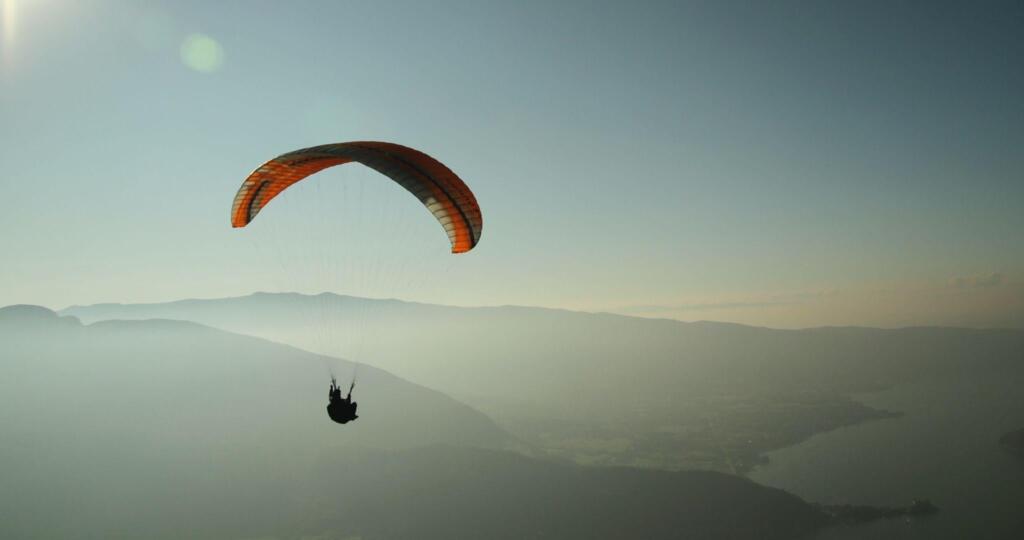
Delhi is vast, and paragliding lets you get the perfect bird’s eye view of the entire city from above. If you enjoy thrills, set out to Sohna, Gurgaon, for this adventure. The spot opens daily, and you only need roughly 37 USD for this activity.
Besides paragliding, you can engage in paramotoring, which doesn’t need training.
3. Artificial rock climbing
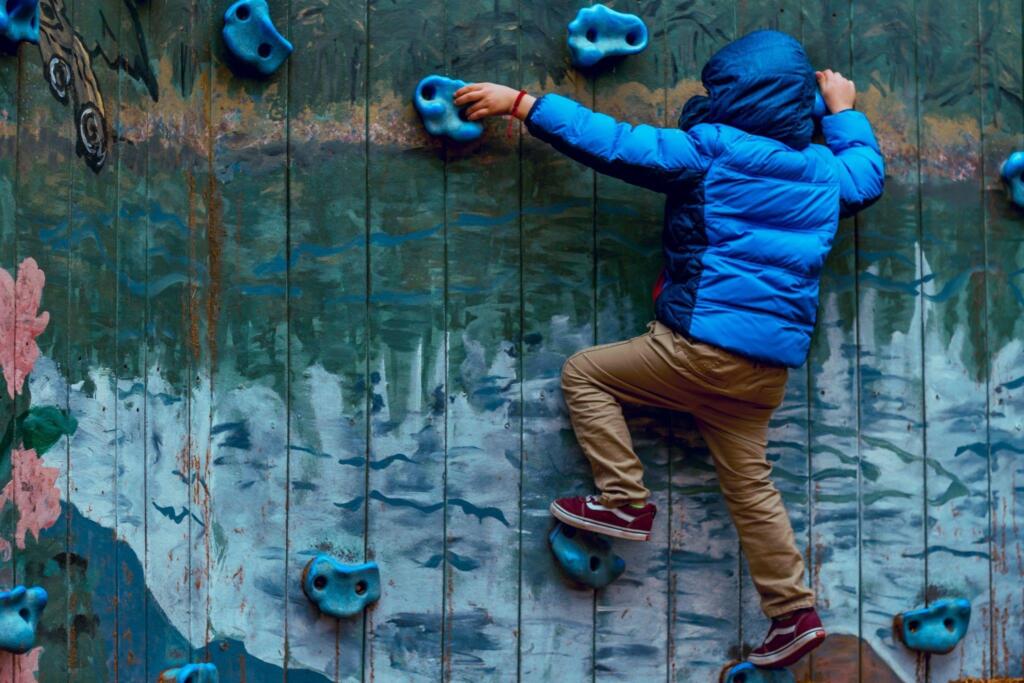
If climbing is your hobby, then Indian Mountaineering Foundation, located on Benito Juarez Road, is your go-to place. The organization has made a name in the sports industry by creating an artificial climbing wall. Here you will come across top climbing athletes in the country that train for climbing competitions.
For about 2 USD, you can mount the wall for hours. Alternatively, you can choose the monthly package, a climbing course to grow your climbing skills. To finish the course, you must go through three types of walls, each more difficult than the previous one.
Remember to carry a comfortable pair of shoes for the day. This spot opens daily except for Mondays.
4. Bungee Jumping at Garden of Five Senses

Located at Sainik Farm, Garden of Five Senses is more than a serenity garden. You can engage in other fun activities like bungee jumping. If thrill is your thing, then you will love bungee jumping at the height of 170m. Interestingly, you get to see the inviting green lands beneath you. Also, the team at Wanderlust Adventure Sports ensures maximum safety, so there is less risk of accidents. After your jump, you get cool photos and a certificate.
The spot opens daily and will only cost you around 37 USD.
Transportation

The available modes of transportation in Delhi are taxis, buses, metro trains, local trains, cabs, and airplanes.
Air transport
Delhi has several airports, which include the Hindon Domestic Airport and the Indira Gandhi International Airport. Although Indira Gandhi is an international airport, it also serves domestic flights. Located in the southwest of the city, Indira Gandhi has three terminals due to the immense number of passengers. Terminals one and two deal with domestic flights only, while terminals three deal with domestic and international flights.
Hindon Domestic Airport, on the other hand, deals only with domestic operations. Taj International Aviation Hub is another much-awaited international airport in Delhi. In Jewar, Taj international airport will likely start its operations in 2024.
Railway transport
Delhi metro has a busy and large transit network connecting the capital to other cities. This transit system serves cities like Gurgaon, Noida, Ghaziabad, Faridabad, and Bahadurgarh. The railway line stretches 390.14 Km, therefore, serving 286 stations.
Road transport
Since road transport is the main transportation form in Delhi, there is a vast range of modes you can choose from. These modes include the following;
Buses
Delhi’s bus transportation system is one of the biggest in India. In fact, it caters to about 60% of Delhi’s transportation needs. These buses are the state’s property under Delhi Transport Corporation’s (DTC) control. There are two types of DTC buses, green (not air-conditioned) and red (air-conditioned). There are also privately owned bus organizations in Delhi.
Although incredibly cheap, these buses can get overcrowded, especially during peak hours. Unfortunately, there needs to be a proper display of bus routes at bus stops in Delhi. However, you can ask people for the route or even check online. The cost of boarding a bus in Delhi depends on distance and age (children between 5-12 pay less).
Taxis
Although highly available, taxis are more costly than buses and rickshaws. Usually, they charge Rs 15 (0.18 USD) for the first kilometer. Any additional kilometer afterward will cost you Rs 8.5 (0.10 USD) each.
Usually, to book a taxi in Delhi, people head to their taxistand in the city. Luckily you can order one online through taxi booking apps. Some popular booking apps to order a cab in Delhi are Ola Cabs, Uber, Fasttrack Taxi App, Meru Cabs, and Carzonrent.
Some taxi services you can try out while in Delhi are;
- Indian Taxi Service
- Bazar Taxi
- Delhi Taxi Services, Contact +91 88029 00588
- Shri Sai Taxi Services
- Jaswinder Taxi Service Delhi
Metro
The metro system is the most economical and fastest way to travel in Delhi. On top of that, it comes air-conditioned to ensure a comfortable environment for travel. The Metro rail network connects the NCR, Old Delhi, and Central Delhi. This system has six lines, namely the green line, red line, yellow line, violet line, airport line, and blue line.
Depending on certain viable factors, the fare can vary between Rs.8 (0.097 USD) to Rs. 30 (0.36 USD). However, a smart card will prove crucial for digital nomads planning an extended city stay. With a smart card, you don’t have to stand in queues to buy tokens. Also, you get a 10% fare discount. Alternatively, you can get a tourist card for unlimited usage for 1.20 USD daily and 3 USD for three days.
Female passengers occupy the first compartment of the metro for safety.
Auto rickshaw
Compared to taxis, auto rickshaws are cheaper and faster for city navigation. Usually, most auto-rickshaws charge Rs. 25 (0.3 USD) for the first kilometer, and any kilometer after that costs an additional Rs. 8 (0.097 USD).
You can prepay your fare at the auto stands to avoid overcharging issues. After payment, you will receive a receipt you can give the driver after arriving at your destination.
Cycle rickshaws
Cycle rickshaws are the ideal transportation mode for short distances. These distances are long for walking and short for boarding an auto-rickshaw. Cycle rickshaws don’t charge by the meter. Therefore you should agree on the fare before boarding. Also, if you intend to cruise the narrow lanes of Delhi, cycle rickshaws are the best choice.
Safety
According to a survey by Praja Foundation, 60% of Delhi locals felt Delhi was an unsafe place to live in. South Delhi recorded the highest (69%) crime-likely region in Delhi, while Northwest Delhi recorded the least at 48%.
Furthermore, the survey stated that 67% of the contributors felt that children, women, and senior citizens were more unsafe.
Based on a survey by Numbeo.com, here is a summary of crime issues and rates in Delhi, India.
| Safety Issue | Percentage (%) | Rating |
| Crime Level | 68 | High |
| Risk of Insult | 53.30 | Moderate |
| Risk of car theft | 55.59 | Moderate |
| Risk of attack | 56.20 | Moderate |
| Risk of mugging or robbing | 57.89 | Moderate |
| Risk of home breakage | 53.84 | Moderate |
| Bribery and corruption | 81.51 | Very High |
| Vandalism and theft | 59.14 | Moderate |
Despite the high insecurity rate in Delhi, the city still receives millions of visitors annually. Additionally, the Delhi government has taken steps to improve the city’s security. These measures include regular police patrols, CCTV installation, and bus panic button installation.
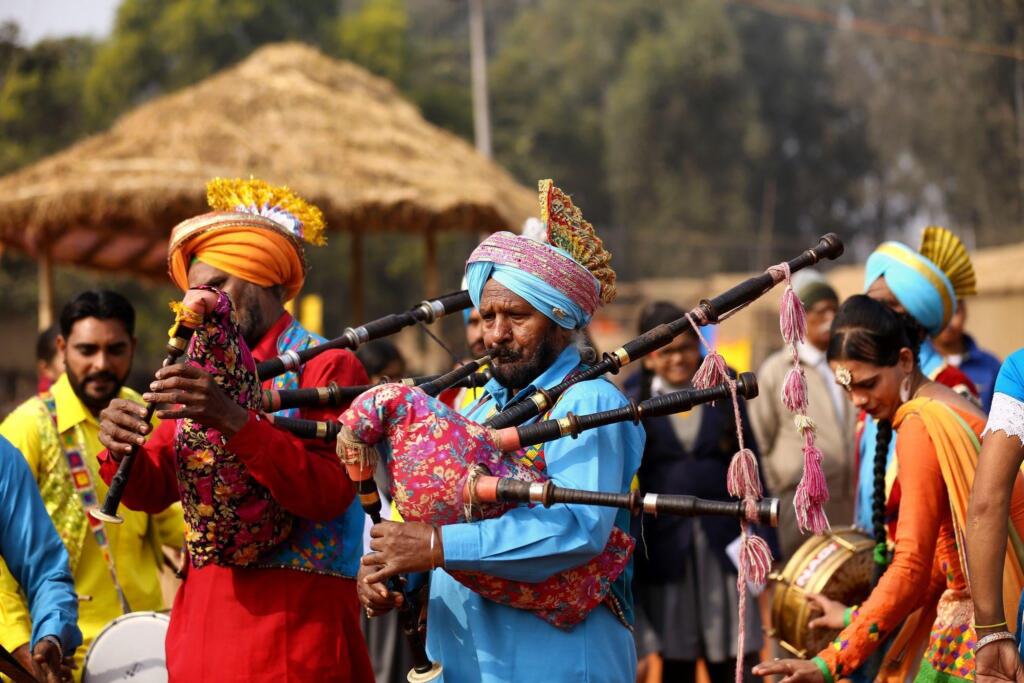
Some of the cultural do’s and don’ts in Delhi include the following;
Do’s
- Greet and bid farewell to locals with the salutation Namaste with a broad smile. You will appear as a friendly foreigner and gain respect from the locals.
- Respectfully bargain in the markets and shops to get a good deal. In fact, Indians take bargaining as a sport. However, don’t try lowballing the merchants; it will appear disrespectful.
- Respect the religious and cultural differences in Delhi. Delhi has a bunch of religions that practice different cultures.
- Take off your shoes when entering people’s homes. Similar to other Asian countries, Indians also believe feet are dirty. So, it’s appropriate to remove them when entering homes and mosques.
- Carry with you a small gift if invited to someone’s home.
- Treat elders with the utmost respect.
Don’ts
- Don’t eat food with your left hand. Indians consider the left hand dirty.
- Don’t wear indecently revealing and tight clothing. Indians are conservative and believe indecent dressing ruins your reputation.
- Don’t touch people with your left hand.
- Don’t point with your index finger, especially at paintings and sacred items.
- Don’t take pictures of people and personal items without permission.
- Don’t carry leather products like bags, wallets, and belts to temples.
Political and economic stability
India experiences a stable political atmosphere. Even better, the economy of Delhi and that of the country is also stable. For years, the service sector has remained the most crucial sector of Delhi’s economy. It is the biggest employer in Delhi state. However, manufacturing and Agriculture also contribute significantly to its economy.
According to a report by ibef.org, Delhi’s economy is among the fastest-growing in the states of India. Based on data from this report, Delhi’s Gross State Domestic Product (GSDP) for 2021-22 stood at USD 123.90 billion. This was an 8.89% growth since 2015.
Due to its rich cultural history, real estate and tourism also play a huge role in the city’s economy. Additionally, the transport sector is also a big role player in the economy of Delhi. The survey mentions that the metro rail network is so busy that it ranks seventh globally. Regarding exports, Delhi reported export of merchandise worth USD 3.10 Billion for the 2023 financial year (period until August 2022).
This economic stability shows the government of Delhi’s commitment to creating a reliable conducive environment for businesses to thrive.
Language and Language Barriers
Regarding languages, India is one of the countries with a huge diversity worldwide. According to the Indian constitution, there are 22 officially recognized languages, with Hindi as the National language. Other languages in India include:
- Punjabi
- Sanskrit
- Urdu
- Gujarati
- Bengali
- Malayalam
- Marathi
- Telugu
- Kannada
- Oriya
- Kashmiri
- Tamil
- Assemese
According to the 2011 census, there were 256,000 mother-tongue English speakers in India. However, after including those who speak it as a second and third language, it adds up to 10% of the Indian population. This makes English the second most spoken language.
Despite Hindi being dominant in Delhi, English is also widely spoken, especially among young people. Taxi drivers, tourist guides, and other service sector members are also quite competent with the language.
Healthcare in Delhi

Government hospitals’ healthcare quality varies significantly from that of private hospitals. This is because of budget constraints by the government. Although expensive, private hospitals are the best option. These hospitals offer quality healthcare, and their operations are faster, thus less waiting time.
Due to the expensive nature of private hospitals, most ex-pats opt to own international healthcare insurance. Furthermore, most private hospitals have programs that cater to medical tourists and international patients.
Some of these recommended hospitals for expats in Delhi are as follows;
1. HCMCT Manipal Hospital, Dwarka
Location: Sector 6, Dwarka
Address; Dwarka, Delhi 110075
Contact: +91 11 4967 4967
2. BLK-Max Super Speciality Hospital
Location: Pusa Rd, Radha Soami Satsang, Rajendra place
Address: New Delhi, Delhi 110005
Contact: +91 11 3040 3040
3. Fortis Hospital
Location: AA-299, Shaheed Udham Singh Marg
Address: Shalimar Bagh, Delhi 110088
Contact: +91 11 4530 2222
You can also choose from this list for more healthcare facility options in Delhi.
Healthcare coverage for foreigners
Delhi has many companies offering health insurance for foreigners. Therefore, you can choose a health insurance program that suits your needs and budget. Some of these health insurance providers you can choose from include the following:
contact: +353 1 514 8480
Contact: +33 (1) 73 03 41 29
- Regency for ex-pats
- ACS
Contact: +33 (0) 1 40 47 91 00
Vaccination
To travel to India, here are some vaccines WHO and CDC recommend you undergo.
- Covid-19
- Typhoid
- Hepatitis A
- Hepatitis B
- Yellow Fever
- Cholera
- Japanese Encephalitis
- Polio Rabies
Before traveling, here are routine vaccinations you should be up to date with.
- Measles
- Chickenpox
- Shingles
- Pneumonia
- TDAP (Tetanus, Diphtheria, and Pertussis)
- Meningitis
- Influenza
In addition, some prevalent diseases you should take precautions from are malaria and Dengue Fever.
Electronic standards
India operates on a power of 230V and a frequency of 50 Hz. The standard socket plug types are type C, type D, and type M. Type C has two round pins, while type D has three round pins in a triangular pattern. Type M is similar to type D, although the pins are larger.
Worldwide electricity supply ranges between 100 V and 240 V. So, using an appliance with a different voltage from the supply voltage can be dangerous. Therefore, carrying a voltage converter would be wise if you come from a country with a low power voltage.
Telephone and Internet plans
According to opensignal.com, India ranks number two, after China, for the biggest telecommunication market in the world. Its telecommunication services constitute 1.1 billion subscriptions, of which 98% are wireless mobile subscriptions. In other words, Indians depend highly on mobile subscriptions. As a result, there are five well-known mobile operators in India. These are;
Below are the major findings of a 2022 data collection survey by opensignal.com regarding India’s mobile network experience.
- Airtel ranked highest for the game, voice app, and video experience. Smartphone users subscribed to Airtel had the best gaming and video streaming experience.
- Jio took the first position for 4G coverage experience and availability. 99.5% of its users spent the most time connected to 4G. Airtel came at number two with a 98.3% availability score for 4G connectivity.
- Vodafone Idea (VI) won the best download and upload speed experiences. Its users experienced a download speed of 13.6 Mbps and an upload speed of 4.9 Mbps.
- Jio took the lead for the excellent and consistent quality mobile operator.
Different mobile operators have different payment plans. So, visit the official websites to know what payment plans are available.
Payment service infrastructure

Despite demonetization, to prevent the circulation of black money, most Indians still use cash as the main payment method. In fact, according to a 2021 survey by LocalCircles,76% of Indians use cash to eat out, get food delivery, and buy groceries. The survey also showed that most Indians are yet to shift to digital payments due to the high convenience of using cash for store purchases.
Meanwhile, digital payment methods are still growing by the day in India. According to imf.org, India has experienced an average annual growth rate of 50% in digital payment volume in the last five years. This makes it one of the countries experiencing rapid growth rates in digital payments.
Popular domestic payment services
Due to the efforts to eliminate cash by the government of India, the country has seen a high growth of digital pavement methods. One of these digital payment methods is card payments, one of the most preferred domestic payment services. Based on data from ceicdata.com, the value of card payments increased by 1.01% from December 2022 to January 2023.
Other preferable domestic payment services in India are;
- Instamojo
- PayU
- Cashfree Payments
- Bill Desk
- Direcpay
- Airpay
- Razorpay
- Juspay
- Epaisa
- Emvantage
- CC Avenue
- Zaakpay
Accessible International Payment Services
Some of the most preferred international payment methods in India are;
- PayPal
- Stripe
- Authorize.net
- 2Checkout
- Checkout.com
- Allied wallet
- SecurionPay
- ANZ
- PayUbiz
- CC Avenue
- Debit cards
- Credit cards
Currencies and exchange rate
The official currency of India is the Indian Rupee (INR). As of 20th March 2023, according to the prevailing market value, 1 INR equals 0.012 USD
Climate, and Seasons
India lies above of equator. Meanwhile, the tropic of cancer passes through the middle of the country, cutting across eight states. As a result, most parts of the country experience a tropical climate. Additionally, it experiences four seasons, namely;
- Summer (Pre-monsoon)-March to May
- Winter-December to February
- Monsoon (Rainy season)-June to September
- Pre-monsoon (autumn season)-October to November..
Delhi is a landlocked city, and it experiences hot summers and cold winters. During the summer, the temperature of Delhi can rise to 45°C (113°F). However, this temperature usually averages 39°C (102.2°F). So as a nomad visiting Delhi, it’s advisable to take precautions when traveling in the summer afternoons.
The winters are chilly, and the temperatures can fall to 3°C (37.4°F). During this time, the winds from the Himalayas mountains prevail over the city, making it extremely cold. Therefore, you will likely experience misty and foggy mornings.
The best months to travel to Delhi are February and March. During this time, the days are sunny, and the nights are cool. Also, you can visit the city in the summer. But unfortunately, you’ll have to deal with warm nights and hot days.
Popular Cuisines

Regarding food, Delhi is a buffet of mouth-watering dishes. Although most dishes are local, some have been borrowed from the Chinese, Mughlai, Punjabi, and Tibetan cuisines.
Some of these must-try cuisines are;
1. Chaat
It is a snack made up of papri chaat, crispy raj kachori, and curd on top. You can find this snack in most of Delhi’s street restaurants.
2. Kebabs and rolls
This cuisine is grilled meat wrapped with chapati/phulka/roti. Also, there are kebabs for both vegetarians and non-vegetarians.
3. Butter chicken
Originally known as murgh makhani, it originated in New Delhi. The dish is a curry made from chicken, butter sauce, and spiced tomato. The dish is similar to chicken tikka masala, but it’s made with tomato sauce.
4. Shawarma
Although it originates from the Middle East, Shawarma has found its way into Delhi restaurant menus. The dish comprises marinated chicken strips wrapped with pita bread or a roomali roti.
4. Biryani
Without a doubt, biryani is a favorite dish for most Indians. Therefore, as an ex-pat, it is a must-try dish. Biryani is simply rice made with Indian spices and meat. In other cases, potatoes and eggs are also ingredients.
Other cuisines you must try while in Delhi are Sohan halwa, Daulat ki chaat, chole kulche, and paranthas.
Common concerns
Some common concerns by ex-pats about Delhi are;
- High air and waste pollution
- High traffic and noise
- Overcrowding in the streets of the city
- Low security, mostly for women.
All in all, the cultural richness of Delhi makes it a place worth visiting for nomads, regardless of the few negatives.
Always check with local country websites for the most up to date visa, health, tax and travel requirements before entering a country. This article is general information and does not constitute legal advice, check with a legal professional for visas, working visas, applicable tax and crypto laws specific to you.

